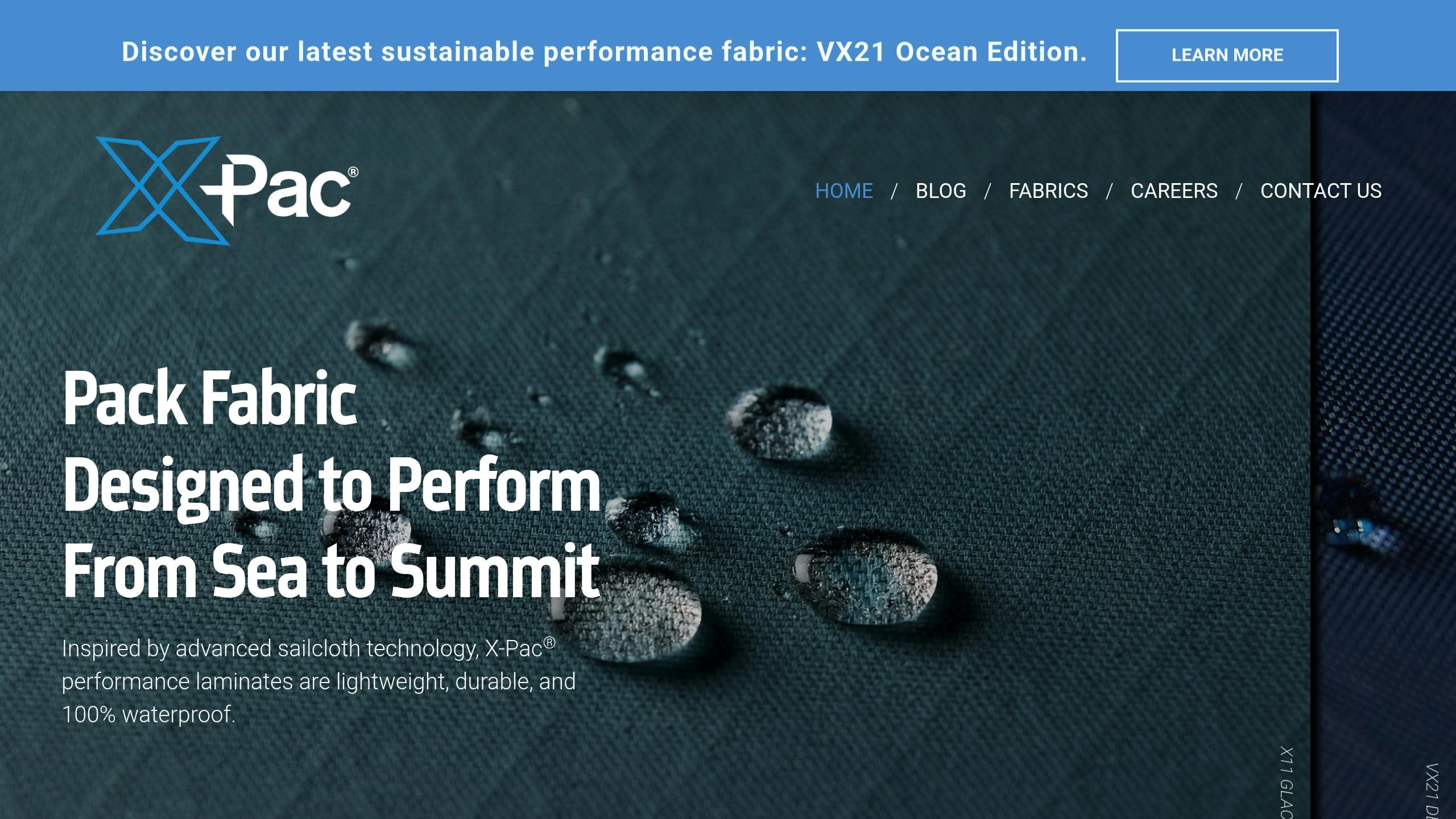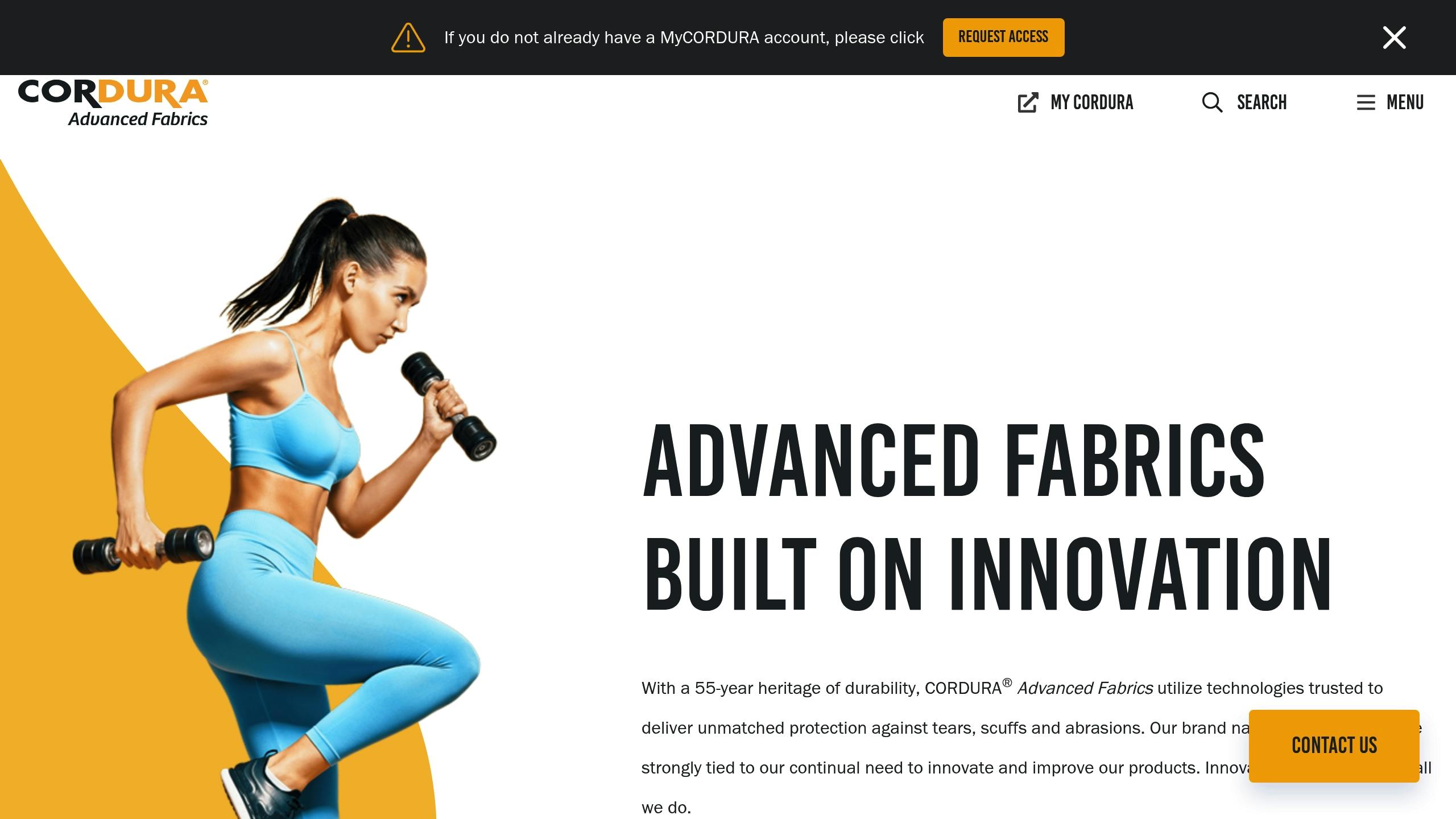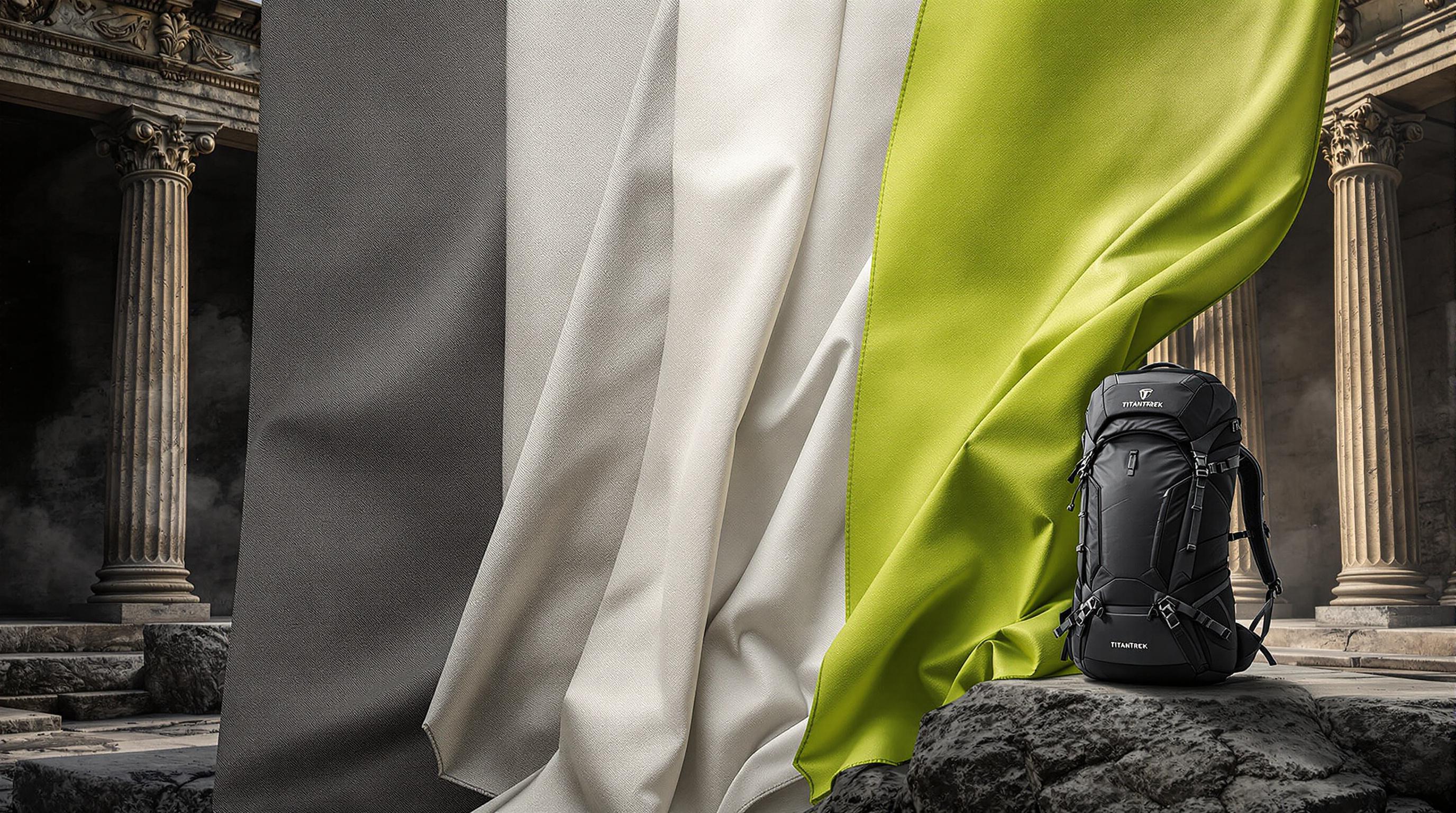Want a backpack that lasts under the sun? UV-resistant materials are key to protecting your gear from fading, weakening, and damage caused by sunlight. Here's a quick breakdown of the best materials for UV-resistant backpacks:
- Nylon: Strong, lightweight, and flexible, with moderate UV resistance depending on quality.
- Polyester: Durable with UV-resistant coatings for added protection.
- X-Pac Fabric: Multi-layered, waterproof, and lightweight, ideal for tough conditions.
- Dyneema Composite Fabric (DCF): Highly UV-resistant, ultra-strong, but more expensive.
- Cordura: Rugged and abrasion-resistant, perfect for heavy outdoor use.
Quick Tip: Choose based on your needs - lightweight for travel, rugged for adventures, or budget-friendly for daily use. Store your backpack away from direct sunlight and apply UV treatments to extend its life.
Best Material For Backpacks? Your Guide To Bag Fabrics
1. Nylon
Nylon is a tough, UV-resistant material commonly used in backpacks. Known for its strength and flexibility, it holds up well in outdoor conditions and offers some water resistance. It strikes a good balance between being durable and lightweight, although its UV protection depends on the overall build quality of the product.
Brands such as Titantrek rely on high-quality nylon to deliver dependable performance under sunlight. Up next, let’s take a look at another popular material - polyester.
2. Polyester
Polyester is another strong synthetic material that followed nylon's success. Known for its durability, it stands up well to wear and tear. One of its standout features is how it handles sunlight. During production, polyester can be treated with UV-resistant coatings, making it a great option for outdoor use. This treatment helps it resist UV damage effectively, ensuring it lasts even under prolonged sun exposure.
sbb-itb-b1567d8
3. X-Pac Fabric

X-Pac fabric is a multi-layer composite that combines tough nylon or polyester with reinforcing fibers and a waterproof backing. This design also helps reduce UV damage, keeping the backpack in good condition over time.
Here’s why X-Pac stands out:
- Weather Resistance: The laminated layers form a waterproof shield, keeping your gear dry.
- Strong Structure: Reinforced fibers prevent stretching or sagging, helping the backpack hold its shape.
- Lightweight Durability: Despite its strength, X-Pac remains light, making it ideal for active users.
Thanks to its durability and ability to perform in tough conditions, X-Pac is a go-to material for high-performance backpacks. If you're looking for a backpack that can handle rough weather and heavy use, X-Pac is worth considering. Brands like Titantrek rely on this fabric to create backpacks built for extreme adventures.
4. Dyneema Composite Fabric
Dyneema Composite Fabric (DCF) stands out for its UV resistance and impressive strength-to-weight ratio, making it a go-to material for high-performance backpacks.
This fabric's molecular structure naturally blocks UV rays, eliminating the need for chemical treatments. Unlike many traditional materials that weaken with prolonged sun exposure, DCF maintains its durability during extended outdoor use. This feature makes it a reliable choice for demanding environments.
However, there are some trade-offs to consider:
- Higher Cost: DCF tends to be more expensive than standard materials.
- Limited Colors: Manufacturing restrictions mean fewer color options are available.
Thanks to its water resistance and minimal stretch, DCF has become a favorite among premium backpack brands. Companies like Titantrek incorporate Dyneema into their designs to boost durability and performance for travelers and adventurers.
5. Cordura

Cordura stands out as a material known for its toughness, especially when it comes to resisting abrasions, tears, and scuffs. This makes it a go-to option for UV-resistant backpacks designed to last.
When compared to nylon or polyester, Cordura's sturdy construction performs better in challenging conditions. That’s why brands like Titantrek often use it in their designs. Its rugged nature makes it perfect for backpacks tailored for intense outdoor use.
With its blend of durability and UV resistance, Cordura remains a popular choice for backpacks built to handle rough adventures.
Conclusion
Picking the right UV-resistant material is key to ensuring your backpack lasts when exposed to harsh sunlight. After reviewing top UV-resistant materials, it’s important to align their strengths with your specific travel needs.
Consider factors like the environment, how often you'll use the backpack, your budget, and its weight. For high-altitude trips or desert conditions, materials such as Dyneema and X-Pac stand out. They hold up well under intense sun exposure but tend to be more expensive. If you're into regular outdoor activities in milder conditions, Cordura provides a dependable mix of toughness and UV resistance. For casual outings or daily commutes, nylon or polyester with UV-resistant coatings offer sufficient protection without breaking the bank.
Match the material to your climate (e.g., high-altitude or tropical), how often you'll use the backpack, your budget, and weight preferences. To make your backpack last even longer, store it away from direct sunlight and reapply UV treatments as needed.

How to Clean Waterproof Travel Gear
How to Clean Zippers on Travel Backpacks